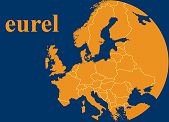In 2014 Scotland took the opportunity to address inequalities within the marriage system. Most of the publicity surrounded the introduction of same sex marriage via the Marriage and Civil Partnership (Scotland) Act 2014. More significantly, for the purposes of this paper, that act also introduced the concept of ‘belief' marriages as distinct from ‘religious' and ‘civil' marriages, effectively recognising people who held non-religious beliefs and granting them the same status as those who held religious beliefs under the Marriage (Scotland) Act 1977 (particularly in relation to wedding ceremonies and celebrants). Two factors contributed to the context in which this Scottish legislation was passed. Firstly, the 2011 Census disclosed that a significant percentage (37%) of the population declared that they were non-religious. Secondly, the popularity of Humanist ceremonies had increased within Scotland and, although they had received some legal recognition in 2005, it was temporary and restrictive within the previous framework dealing with religious marriages.
In 2013 the proposed legislative measures were opposed vigorously both by establishment and minority religious groups. This paper examines how these protections were introduced and their effectiveness over the last four years. Finally it also addresses whether this template could be relevant for other areas of Scots law and for other jurisdictions.
- Poster

 PDF version
PDF version

